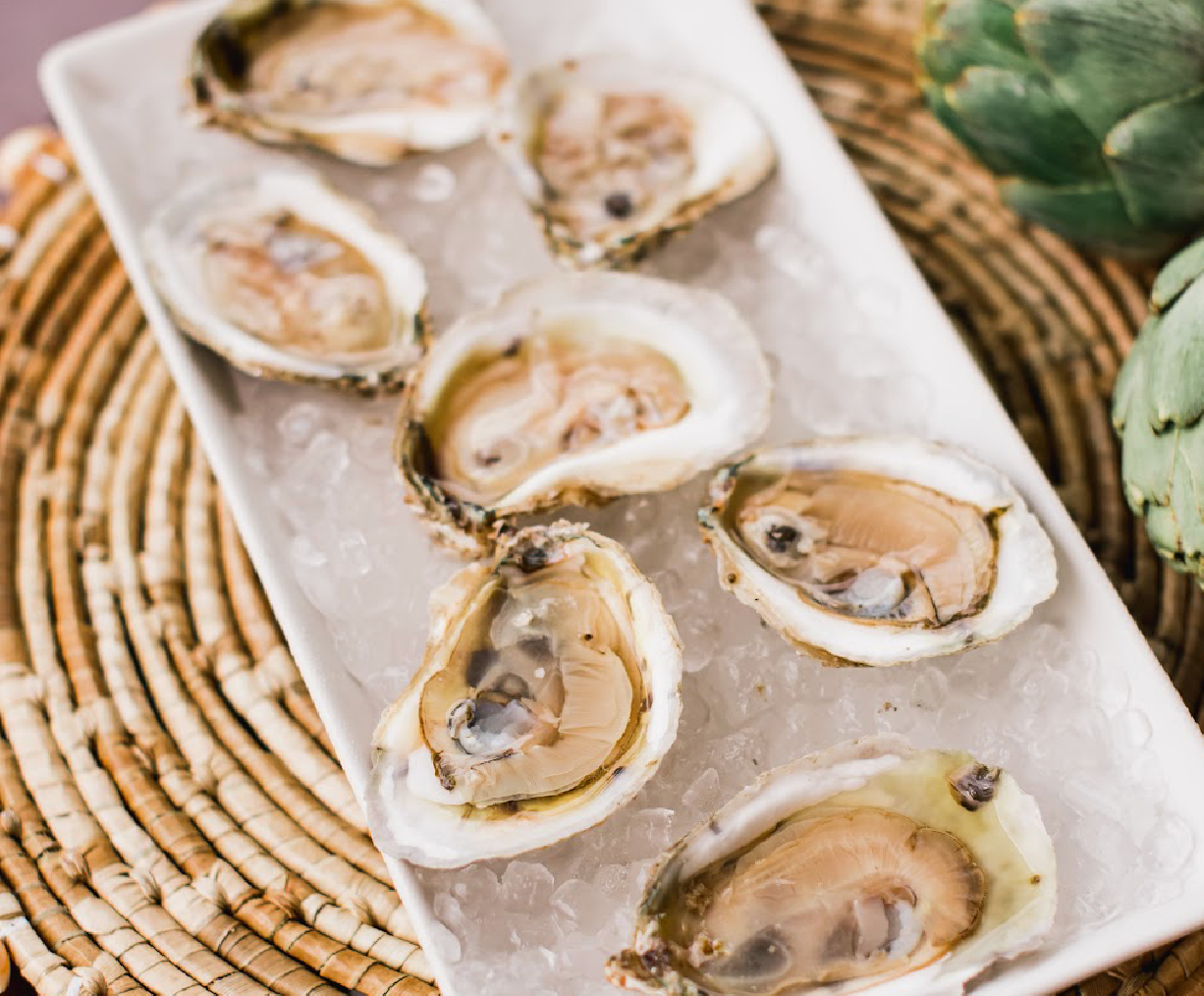
Whether you’re an oyster newbie or a shuckin’ pro, it can be hard to describe exactly what an oyster tastes like. Combine that with the fact that their flavor profiles can vary greatly by merroir, time of year, and more and it can leave you tongue-tied. This guide will give you some basics on what oysters taste like, and how to talk about them.
To describe an oyster’s flavor, we have to consider several factors including oyster species, geographic location, merrior, and more. Just like wine, oysters can vary greatly in flavor, as influenced by the waters they live in. For example, White Stone Oysters tend to have vegetal, sweet, and mushroom notes because of the relatively low salinity of the Chesapeake Bay. In contrast, oysters grown in New England tend to be very salty.
Just like other raw seafood, fresh oysters shouldn’t taste overly fishy. Instead, they should taste like the ocean. It’s important when slurping and shucking to leave the oyster’s liquor (the natural juices inside the shell) in. This liquor will give you the full flavor experience.
As oysters are cooked, their flavors can also change. Typically, cooked oysters will get a bit saltier and some of their more natural flavors may come out.
SALT
Saltines is a major characteristic to consider when tasting an oyster. Because oysters are filter feeders, they take on the flavors of their native waters. Depending on where they’re grown (north, south, Atlantic, Pacific), their saltiness can vary. Try adding some lemon if you’re trying a new oyster breed and find them too salty.
SWEETNESS
Sweet may not be the first word that comes to mind when considering the flavors of raw seafood, but many oysters do in fact have sweet notes.
Some oysters will taste like cucumbers or melons, while others can have seaweed, earthy, or even copper flavors. Again, this will vary depending on where and when the oysters were grown.
TEXTURE
The mouth feel of any oyster will also greatly affect the taste and experience. For example, Pacific oysters tend to be much larger in size than Atlantic and overall can be a bit more “slimy”. This isn’t necessarily a bad thing, but it’s definitely different.
White Stone Oysters tend to be very plump and muscular. Nothing affects the flavor of an oyster more than its habitat. That's why we raise our oysters at the surface of the water where the food density is highest and the water quality is purest. Our prime location and unique growing method produce a plump oyster with a well-balanced flavor profile that can be enjoyed all year long!
We strive to grow a world-class oyster in terms of half-shell presentation, consistency, meat quality, and flavor. On the outside, our oyster has a deep cup and a thick polished shell. Inside, a plump oyster fills the shell. Never any grit, mud, or sand. Our oyster's more subtle flavors will change with the seasons, but our farm is strategically located to blend salty and sweet as only the Chesapeake can. Its firm meat makes it a very approachable oyster and its layered flavors excite even the most seasoned ostreaphiles.
The best thing you can do when learning to taste oysters is to try as many varieties as possible. This will help you rule out regions you don’t like and narrow in on flavor profiles that you enjoy. Need more oyster tips and tricks? Visit our blog.
← Older post Newer post →
